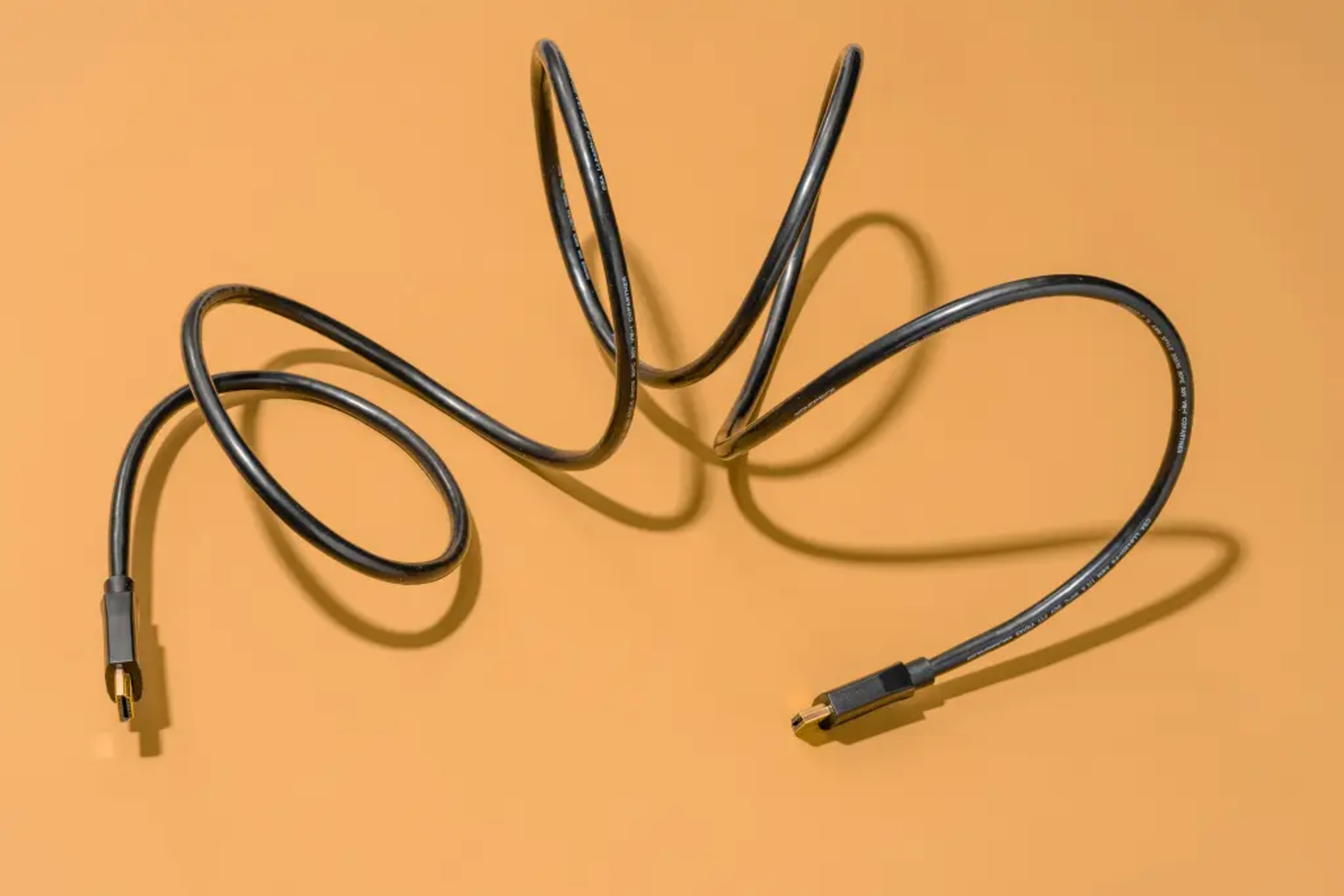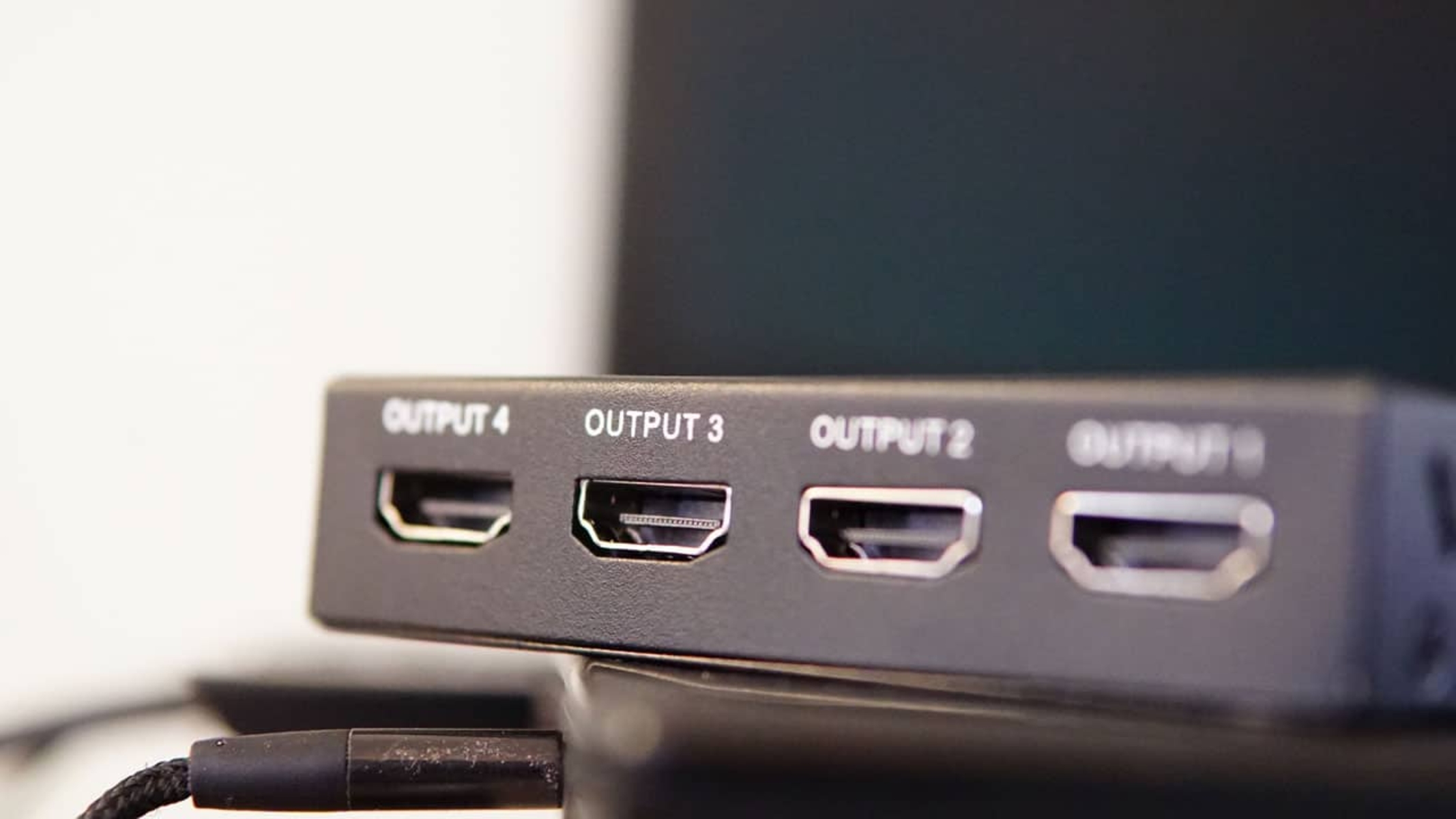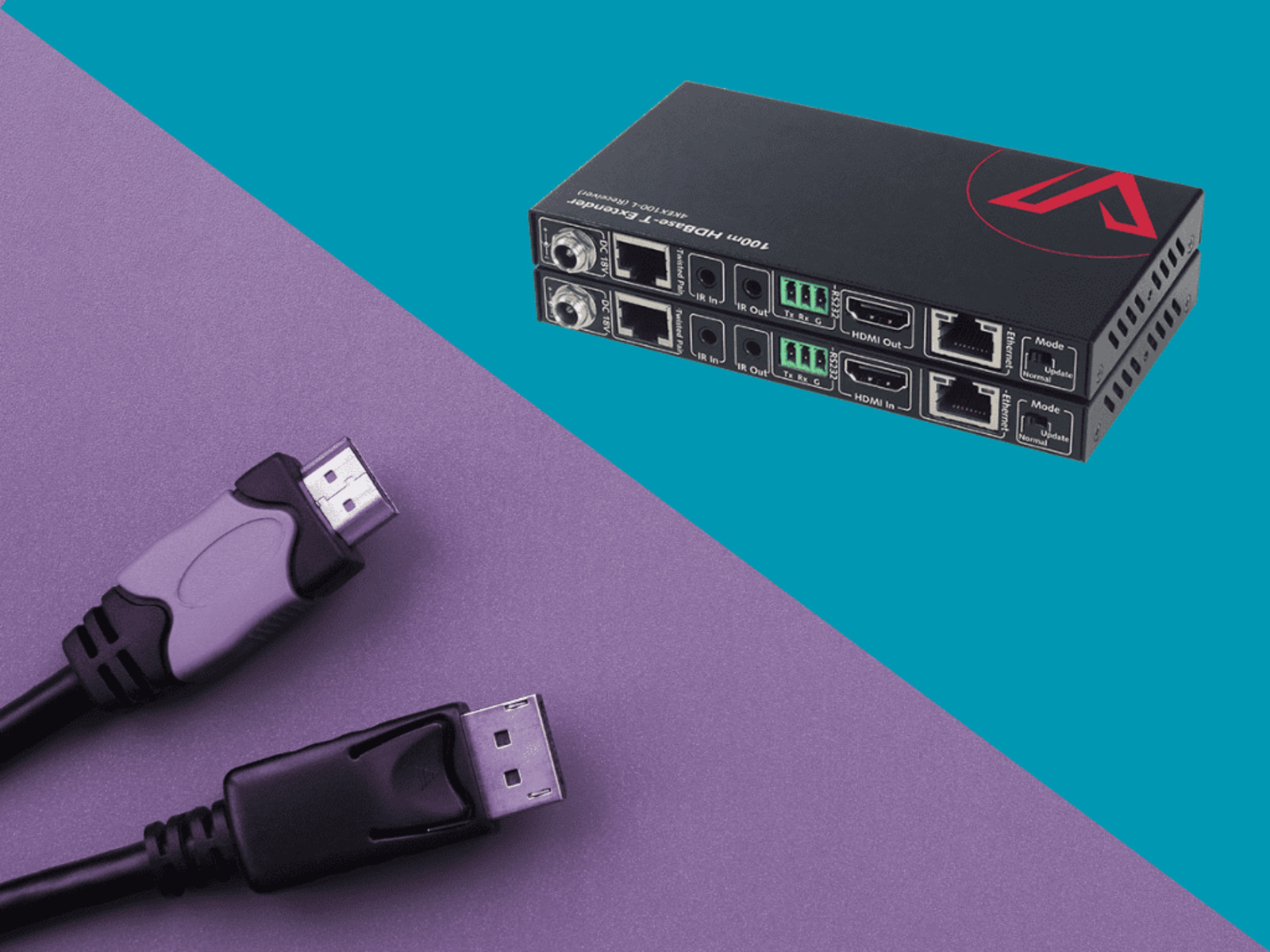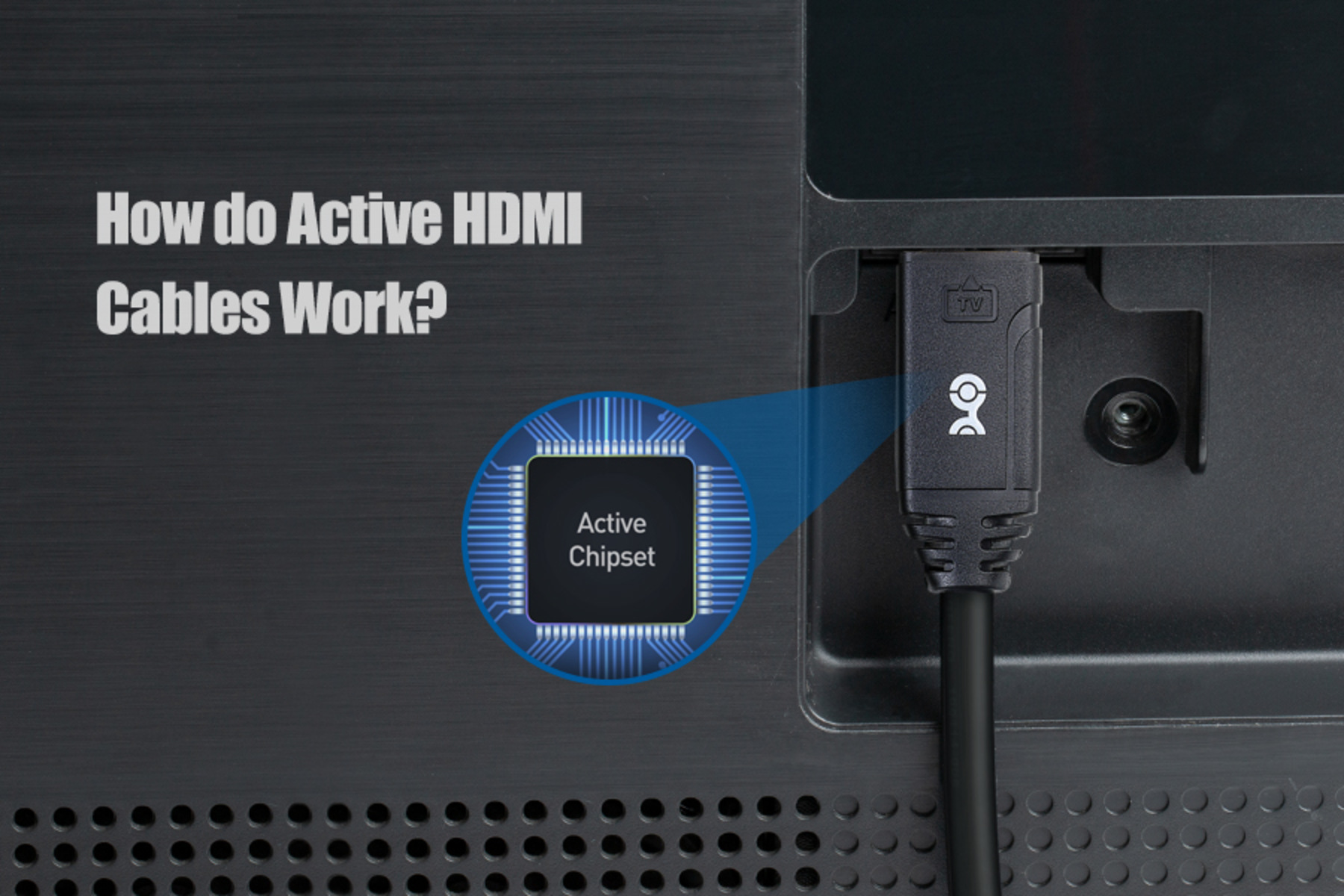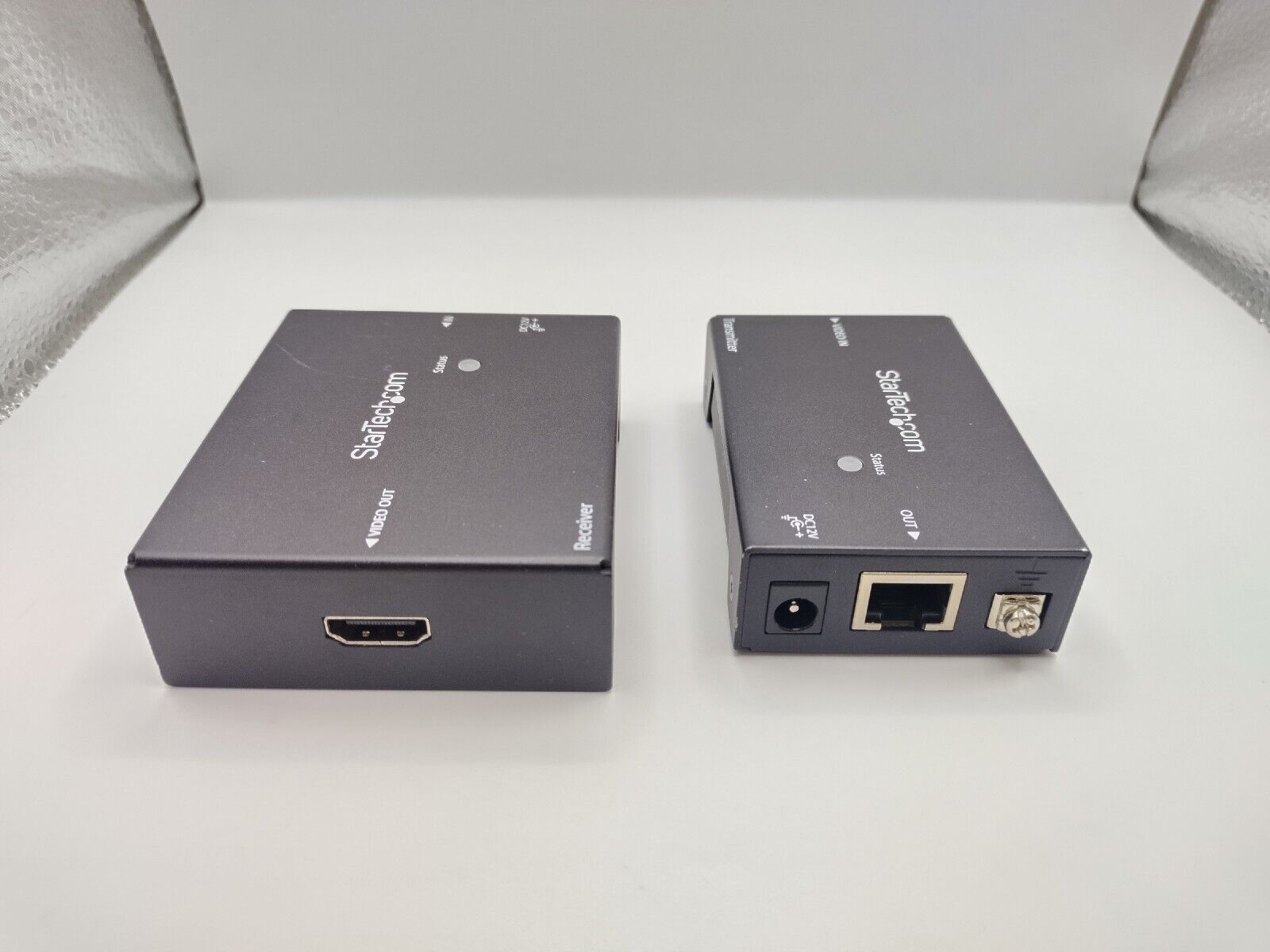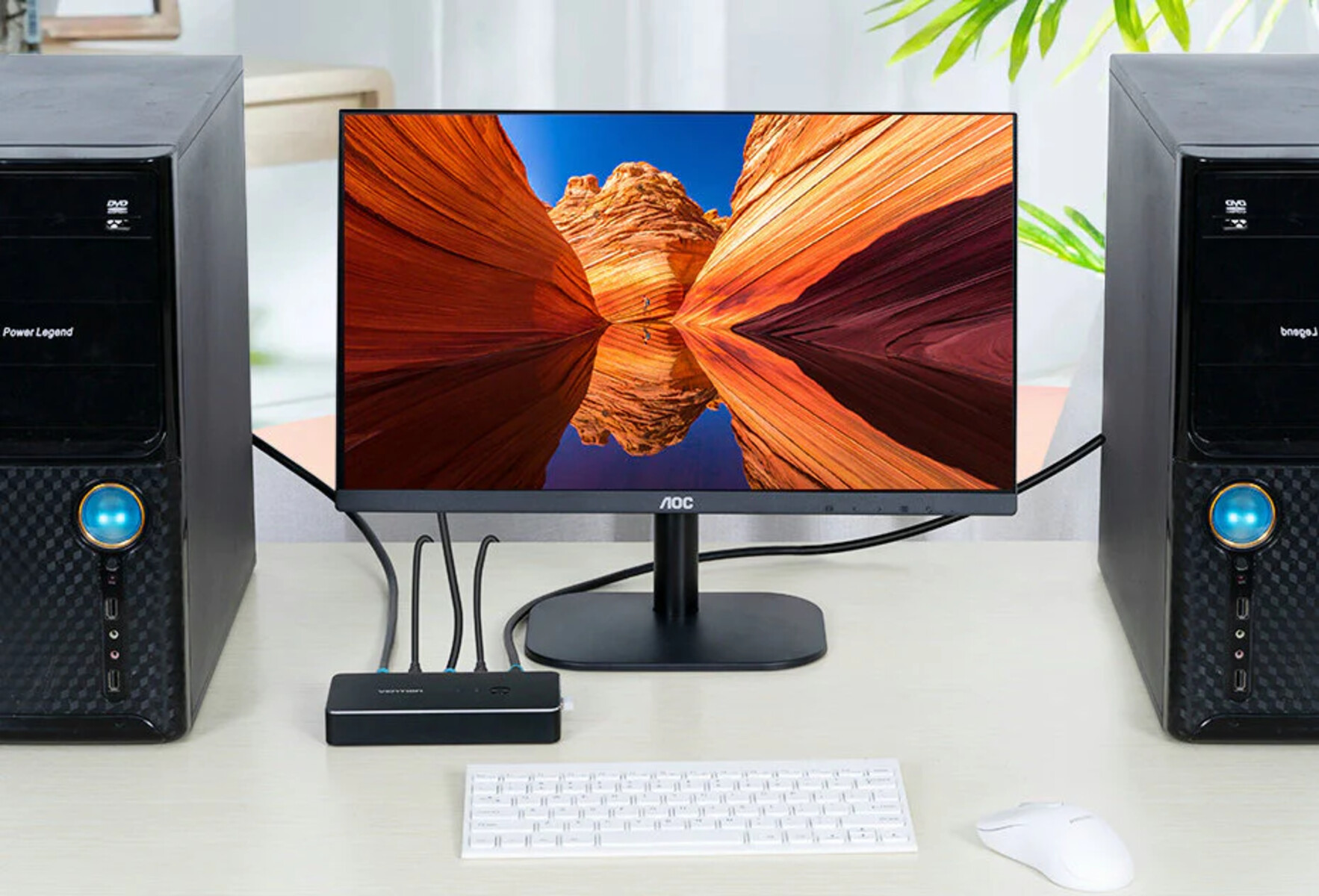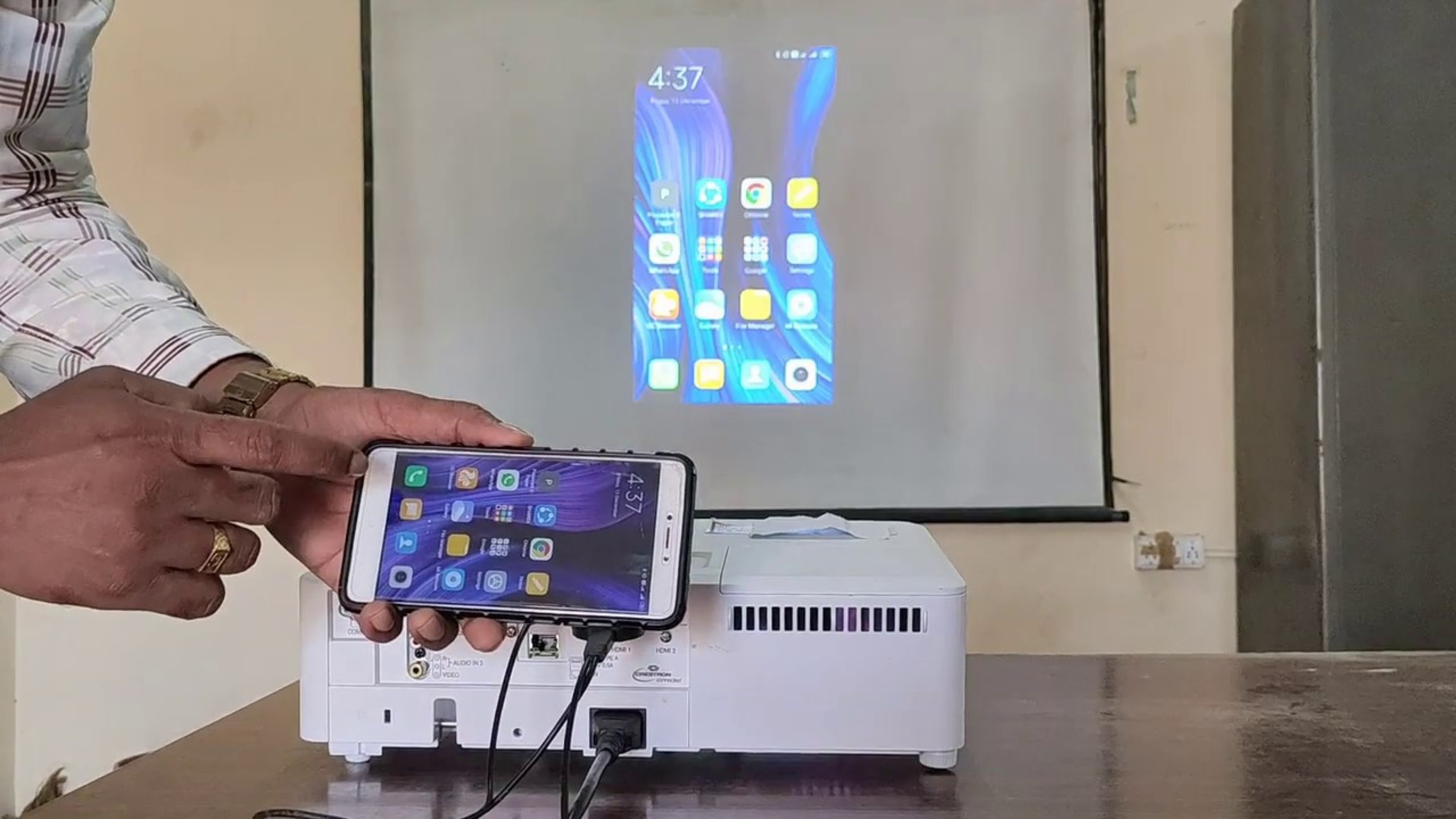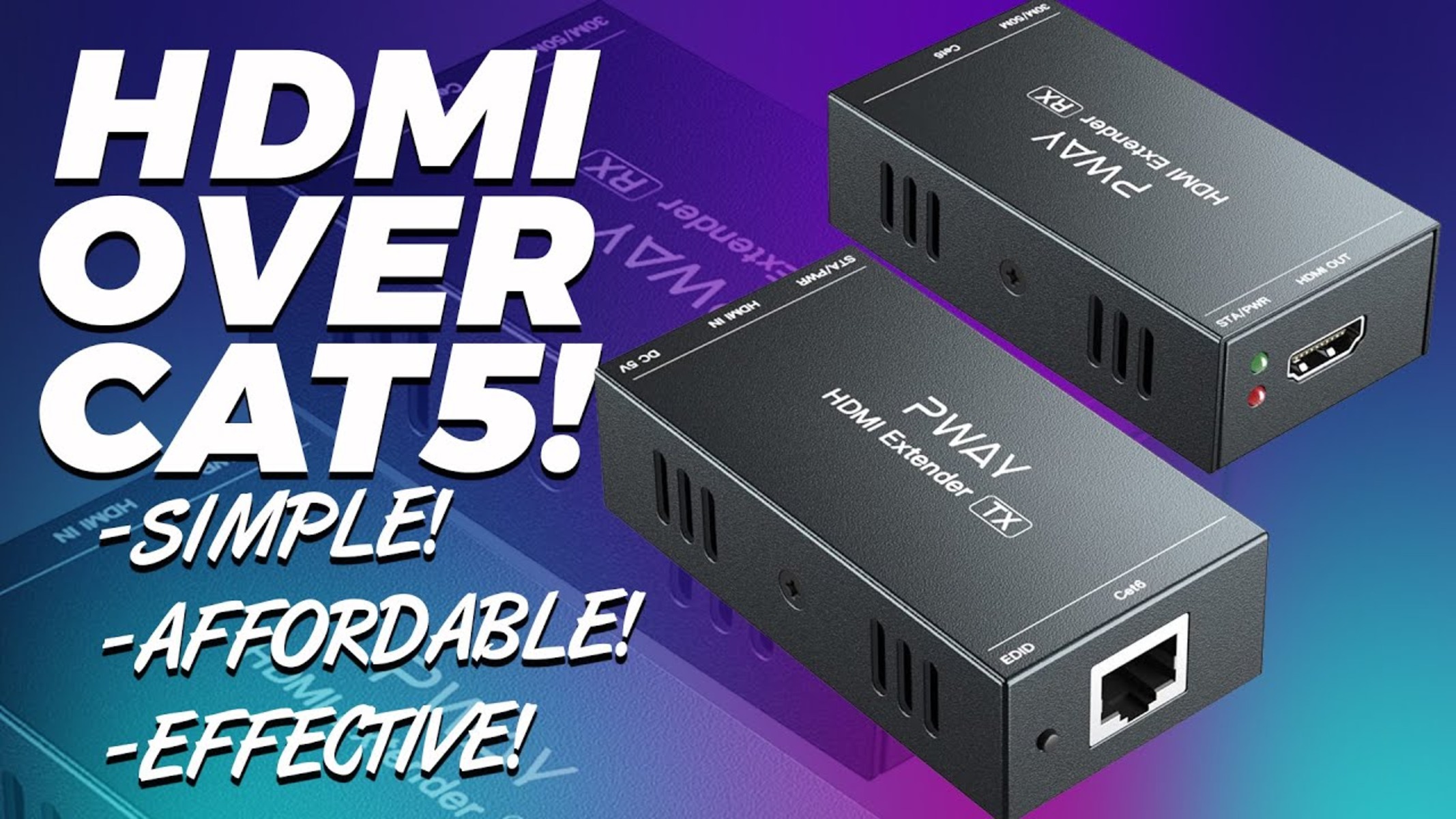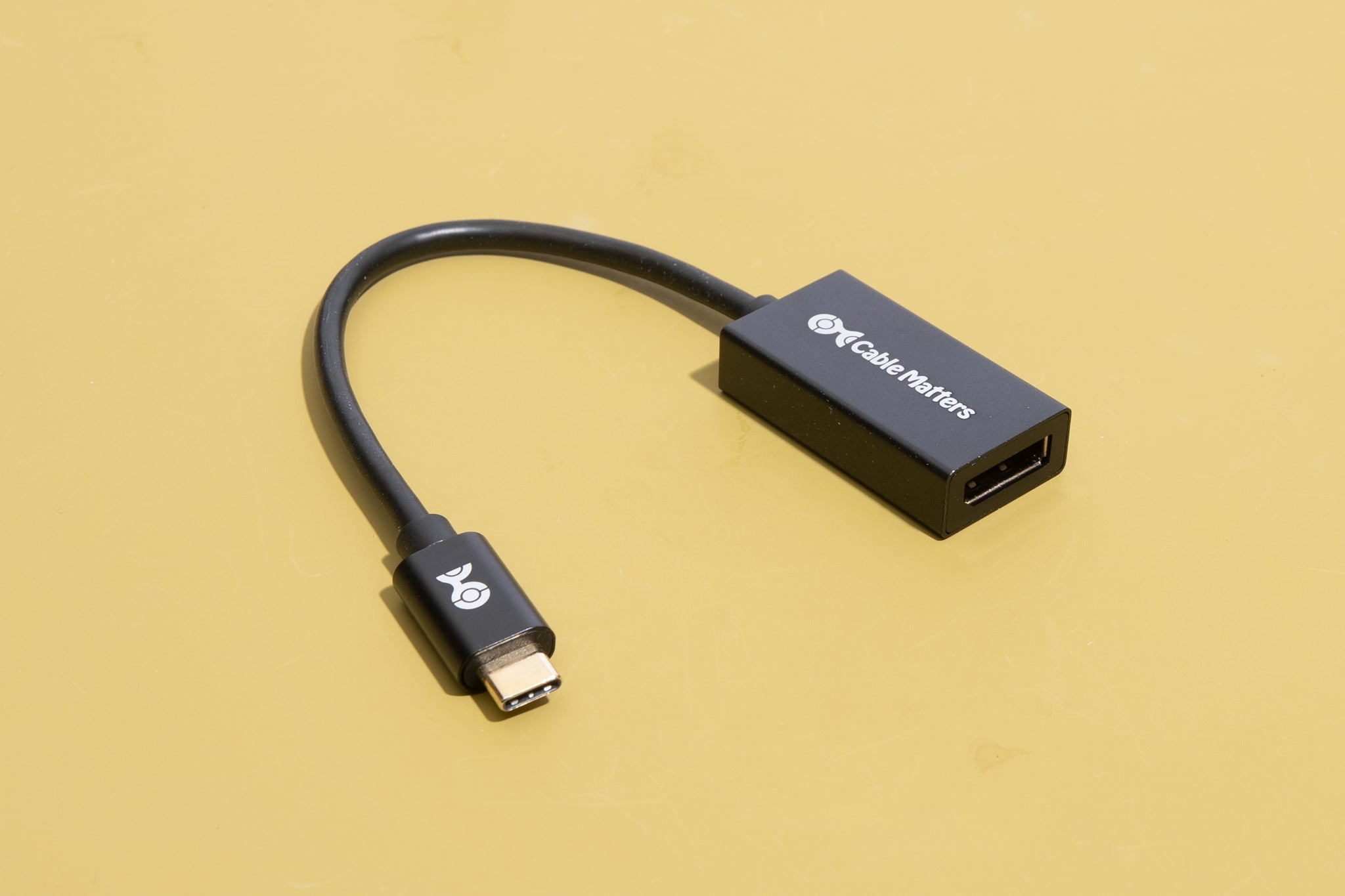Introduction
Modern technology has revolutionized the way we connect and transfer audio and video signals. One of the most popular and widely used interfaces for high-quality audio and video transmission is HDMI, which stands for High Definition Multimedia Interface. Whether you’re setting up a home theater system, gaming console, or multimedia display, HDMI cables are essential for a seamless and immersive experience.
HDMI cables have become the industry standard for delivering crystal-clear audio and high-definition video signals between devices. From Blu-ray players and game consoles to televisions and projectors, HDMI cables provide a reliable and efficient connection. However, one question that often arises is: how far can HDMI cables run without losing signal quality?
To answer this question, it’s crucial to understand the basics of HDMI technology and the factors that can affect cable lengths. In this article, we will explore the capabilities of HDMI cables, discuss the factors that can impact signal strength, and explore options for extending cable lengths if needed.
Before we dive into the specifics, let’s take a closer look at what HDMI is and how it works.
What is HDMI?
HDMI, which stands for High Definition Multimedia Interface, is a digital interface that allows for the transmission of high-quality audio and video signals between devices. It was first introduced in 2003 as a replacement for analog interfaces, such as composite, component, and S-Video cables, which had limitations in terms of picture quality and compatibility.
HDMI cables support a wide range of video resolutions, including standard definition (480p) up to ultra high-definition (4K and even 8K). They also carry audio signals, eliminating the need for separate audio cables. This all-in-one solution simplifies setup and provides a streamlined connection between devices.
One of the key advantages of HDMI is its ability to transmit uncompressed digital signals. Unlike analog connections that require conversion and can result in signal degradation, HDMI cables transmit data in a purely digital format, ensuring a high level of picture and sound quality. This is particularly important for high-definition content, where every detail matters.
In addition to video and audio signals, HDMI cables can also transmit control signals, allowing for seamless communication between devices. This enables features such as remote control operation and automatic device synchronization, enhancing the user experience.
There are different types of HDMI connectors, ranging from the standard Type A connector, commonly used in TVs and projectors, to smaller Type C (Mini HDMI) and Type D (Micro HDMI) connectors found in some tablets, smartphones, and cameras. Regardless of the connector type, HDMI cables are built to deliver reliable performance and ensure compatibility between devices.
Overall, HDMI has become the go-to standard for audio and video transmission in both consumer and professional settings. Its versatility, high-quality performance, and ease of use make HDMI a crucial component in home theaters, gaming systems, presentations, and various other multimedia applications.
How do HDMI Cables Transmit Data?
HDMI cables use a digital signal transmission method to carry audio and video data between devices. Unlike analog cables that transmit electrical signals, HDMI cables transmit data in a binary format using a series of 0s and 1s.
Inside an HDMI cable, there are multiple twisted pairs of wires, each dedicated to a specific signal. These signals include video (both color and brightness information), audio (such as surround sound or stereo), and control signals (for device synchronization and other functions).
The digital data is transmitted using differential signaling, which means that the electrical signals have a positive and negative component. This helps to reduce noise and improve signal integrity over long distances. It also allows for high-speed data transfer rates, which are necessary for transmitting high-definition video and multi-channel audio.
The HDMI data is encoded using a protocol known as Transition-Minimized Differential Signaling (TMDS). TMDS helps to ensure the accuracy of the transmitted data by employing error correction techniques. This minimizes data loss and maintains the integrity of the audio and video signals.
At the source device (e.g., a Blu-ray player), the HDMI transmitter converts the digital audio and video data into TMDS-encoded signals. These signals are then transmitted through the HDMI cable to the receiving device (e.g., a TV). The receiving device’s HDMI receiver decodes the TMDS signals and converts them back into audio and video data, which is then displayed or played back.
It’s important to note that HDMI cables are directional, meaning they have a specific input and output end. The source device should be connected to the input end of the cable, and the receiving device should be connected to the output end. Connecting the cable in the wrong direction can result in no signal or poor-quality audio and video.
Overall, HDMI cables transmit digital data by encoding it into TMDS signals and using differential signaling to maintain accurate and high-quality audio and video transmission. This digital transmission method ensures reliable and consistent performance, making HDMI the preferred choice for connecting devices in today’s multimedia setups.
Factors that Affect HDMI Cable Lengths
While HDMI cables are designed to provide reliable audio and video transmission, there are several factors that can affect their maximum length before signal degradation occurs. Understanding these factors can help you determine the optimal length for your HDMI cable setup.
1. Cable Quality: The quality of the HDMI cable itself plays a significant role in signal integrity. Higher quality cables are constructed with better shielding and conductors, which reduce signal loss and interference. Choosing a high-quality cable can help maintain signal strength over longer distances.
2. Cable Length: As a general rule, longer HDMI cables are more prone to signal loss than shorter ones. The longer the cable, the more resistance the signals have to overcome, resulting in potential degradation. However, the impact of cable length varies depending on the quality of the cable and the devices being connected.
3. Signal Resolution and Bandwidth: Higher resolution signals, such as 4K or 8K, and signals with higher bandwidth requirements, such as HDR (High Dynamic Range) content, may experience more significant signal loss over longer cable lengths. These signals require more data to be transmitted, which can be affected by cable length and quality.
4. Cable Bends and Stress: Excessive bending or stressing of HDMI cables can lead to signal loss. Sharp bends, tight cable routing, or pressure on the cable can cause internal wire damage or interfere with the cable’s shielding, resulting in signal degradation. Proper cable management and avoiding tight bends can help prevent this issue.
5. Interference and EMI: Electromagnetic interference (EMI) from other electronic devices or power sources can impact the signal quality of HDMI cables. Strong EMI can cause signal degradation, distortion, or complete loss. Keeping HDMI cables away from sources of EMI or using shielded cables can help mitigate this issue.
6. Device Compatibility: The compatibility between the devices being connected via HDMI can also affect signal strength. Some devices may have stronger HDMI output signals, while others may have more sensitive input ports. Compatibility issues may become more apparent over longer cable lengths.
It’s important to note that the maximum recommended length for HDMI cables can vary depending on the factors mentioned above. While shorter cable lengths generally provide a more stable signal, high-quality cables and proper installation techniques can help extend the maximum usable length of HDMI cables while maintaining signal integrity.
Standard HDMI Cable Lengths
HDMI cables are available in various lengths to accommodate different setups and distances between devices. While there is no official standard for HDMI cable lengths, there are common lengths that are readily available in the market.
The most common standard HDMI cable lengths range from 3 to 50 feet (0.9 to 15 meters). These lengths are suitable for most residential and commercial applications, including connecting TVs, projectors, gaming consoles, and media players to audio/video sources.
Shorter HDMI cable lengths, such as 3 to 6 feet (0.9 to 1.8 meters), are ideal for connecting devices that are located close to each other, like connecting a Blu-ray player to a TV. These shorter cables tend to be more flexible and easier to manage, especially in tight spaces.
For setups where devices are further apart, such as in larger conference rooms or home theaters, longer HDMI cables are often needed. Cable lengths between 10 to 25 feet (3 to 7.6 meters) are commonly used for such scenarios. These lengths provide the necessary reach without sacrificing signal quality.
For installations that require even longer cable lengths, such as connecting projectors or displays to conference room AV systems or routing HDMI signals through walls, ceilings, or conduits, HDMI cable lengths of 30 feet (9.1 meters) and beyond are available. However, it’s essential to consider cable quality and potential signal loss with longer cable lengths.
It’s worth mentioning that HDMI cables longer than 50 feet (15 meters) may encounter signal degradation due to the increased length and resistance. In such cases, additional equipment, such as signal boosters or HDMI extenders, may be required to maintain signal integrity over these longer distances.
When choosing the appropriate HDMI cable length, it’s essential to consider the specific requirements of your setup and the distance between your devices. It’s generally recommended to select a length that allows for some flexibility and future-proofing. Choosing a high-quality cable from a reputable manufacturer can help ensure reliable performance and minimize the risk of signal loss.
HDMI Cable Length vs. Quality
When it comes to HDMI cables, there is a common misconception that longer cables always result in reduced signal quality. While cable length can have an impact on signal integrity, it is not solely determined by the length of the cable. The quality of the HDMI cable itself plays a crucial role in maintaining signal strength.
Higher-quality HDMI cables are designed with better shielding and conductors, which help minimize signal loss and interference. These cables are constructed using robust materials and advanced manufacturing techniques to ensure reliable performance over longer distances.
However, it’s important to note that as cable length increases, the electrical resistance of the cable also increases. This resistance can lead to signal degradation, resulting in potential issues such as pixelation, audio dropouts, or intermittent connectivity problems. The longer the cable, the more critical it becomes to use a high-quality cable to counterbalance the increased resistance.
Lower-quality or poorly constructed HDMI cables may not be able to maintain signal integrity over longer distances, even if they are marketed as being able to support those lengths. These cables may lack proper shielding, have thin or inadequate conductors, or suffer from poor connector quality.
Furthermore, HDMI cables carrying higher resolution signals, such as 4K or 8K, or signals with higher bandwidth requirements, such as HDR or Dolby Atmos, are more susceptible to signal degradation over longer lengths. These signals require more data transmission, and any loss or interference in the cable can result in compromised picture or sound quality.
To ensure the best possible signal quality, it is recommended to choose high-quality HDMI cables that are specifically designed for the intended usage. Look for cables with features like gold-plated connectors, thick shielding, and high-quality conductors. These cables are engineered to minimize signal loss, reduce interference, and provide optimal performance over longer cable lengths.
It’s also important to consider the specific requirements of your setup. If you need to transmit HDMI signals over longer distances, using signal boosters, HDMI extenders, or active cables can help maintain signal strength. These devices amplify the signal to compensate for any degradation that may occur over extended cable lengths.
In summary, while longer HDMI cables can potentially result in reduced signal quality, it is the cable’s quality and construction that have a more significant impact. By investing in higher-quality HDMI cables and considering any additional signal boosting solutions, you can enjoy reliable and high-quality audio and video transmission over longer distances.
How Far Can HDMI Cables Run Without Signal Loss?
The maximum distance that HDMI cables can run without experiencing signal loss depends on various factors, including the cable quality, signal resolution, cable length, and any external interference. While there is no one-size-fits-all answer, there are some general guidelines to consider.
For standard HDMI cables (HDMI 1.4 and earlier versions) that support Full HD (1080p) resolution, the maximum recommended length is typically around 50 feet (15 meters). Beyond this length, the risk of signal loss or degradation increases, especially if the cable quality is not optimal.
For HDMI cables used with higher resolution signals, such as 4K or 8K, the maximum recommended length becomes shorter due to the increased data transmission requirements. HDMI 2.0 and later versions, which offer increased bandwidth for higher resolutions and features like HDR and Dolby Atmos, typically have a maximum recommended length of 25 feet (7.6 meters).
However, it’s important to note that these are general guidelines, and the actual maximum length can vary depending on the quality of the cable, signal strength, and other factors. High-quality HDMI cables with proper construction and shielding can sometimes maintain signal integrity over longer distances.
To extend the maximum distance for HDMI cables, there are several options available:
- Active HDMI Cables: These cables incorporate built-in signal amplification technology, allowing them to transmit the signal over longer distances with minimal loss.
- HDMI Signal Boosters/Repeaters: These devices amplify the HDMI signal, improving its strength and allowing it to travel over longer cable runs. They can be placed at intervals along the cable to maintain signal integrity.
- HDMI Over Ethernet Extenders: These devices convert the HDMI signal into Ethernet data packets, which can be transmitted over longer distances using standard Ethernet cables. At the receiving end, the signal is converted back to HDMI.
- HDMI Fiber Optic Cables: These cables use fiber optic technology to transmit HDMI signals, providing significantly longer reach without signal loss. Fiber optic cables are not subject to interference and can transmit high-resolution signals over distances of up to 100 feet (30 meters) and beyond.
It’s important to consider the specific requirements of your setup and the desired cable length. If you need to transmit HDMI signals over longer distances, it’s recommended to use higher-grade cables, signal boosters/repeaters, or HDMI over Ethernet extenders. If budget and installation constraints allow, HDMI fiber optic cables can provide the best performance and reach.
Overall, the maximum distance that HDMI cables can run without signal loss depends on various factors. By choosing high-quality cables, considering signal resolution and using appropriate signal boosting techniques, you can extend the reach of HDMI cables and enjoy reliable audio and video transmission over longer distances.
Long HDMI Cable Options
When you need to transmit HDMI signals over longer distances, there are several options available to ensure reliable signal transmission and maintain exceptional audio-video quality. These options are specifically designed to overcome the limitations of standard HDMI cables and extend the reach of your setup.
1. Active HDMI Cables: Active HDMI cables contain built-in signal amplification technology that boosts the signal strength, allowing for longer cable lengths without compromising the signal quality. These cables are available in various lengths and support different resolutions, including Full HD, 4K, and even 8K.
2. HDMI Fiber Optic Cables: HDMI fiber optic cables are an excellent choice for long-distance HDMI transmission. These cables use fiber optic technology, which allows for the transmission of high-resolution audio and video signals over extremely long distances without signal loss or interference. Fiber optic cables are resistant to EMI and offer exceptional bandwidth capabilities.
3. HDMI over Ethernet Extenders: HDMI over Ethernet extenders, also known as HDMI baluns, transmit HDMI signals over standard Ethernet cables. These extenders convert the HDMI signal into packetized data that can be transmitted over long distances using Ethernet cables. At the receiving end, the signal is converted back to HDMI. This option is suitable when you already have Ethernet cables in place or when the HDMI devices are located far from each other.
4. HDMI HDBaseT Extenders: HDMI HDBaseT extenders extend HDMI signals over Cat5e or Cat6 cables, allowing for longer cable runs. HDBaseT technology supports high-definition video, audio, control signals, and even power over the same Cat5e or Cat6 cable, providing a versatile and convenient solution for long-distance HDMI transmission.
5. HDMI Wireless Extenders: For situations where running cables is not feasible or convenient, HDMI wireless extenders offer a reliable solution. These systems use wireless technology to transmit audio and video signals between the transmitter and receiver units, eliminating the need for long cables. However, it’s important to ensure that the wireless extender you choose supports the desired resolution and provides a stable connection free from interference.
When selecting a long HDMI cable option, it’s important to consider factors such as the desired cable length, signal resolution, budget, and installation requirements. Each option has its advantages and considerations, so it’s essential to choose the one that best suits your specific needs.
By exploring these long HDMI cable options, you can extend the reach of your HDMI setup and enjoy uninterrupted, high-quality audio and video signals over greater distances.
Extending HDMI Cable Lengths
When you need to extend the length of an HDMI cable beyond its recommended limits or overcome the limitations of a standard HDMI cable, there are several methods available to extend HDMI cable lengths without sacrificing signal quality. These methods provide flexibility and enable you to customize your HDMI setup to suit your specific needs.
1. Signal Boosters/Repeaters: HDMI signal boosters or repeaters are devices that amplify the HDMI signal, allowing it to travel over longer cable runs. These devices help to compensate for any signal loss that may occur over extended distances. Signal boosters or repeaters are typically placed between two HDMI cables, actively amplifying the signal to maintain its integrity.
2. HDMI over Cat5e/Cat6 Extenders: HDMI over Cat5e/Cat6 extenders enable the transmission of HDMI signals over long distances using Cat5e or Cat6 network cables. These extenders convert the HDMI signal into packetized data that can traverse Ethernet cables, allowing for longer cable runs. They are an ideal solution when you already have Ethernet cables in place or when running HDMI cables is not practical.
3. HDMI Baluns: HDMI baluns, also known as HDMI over Ethernet adapters, are devices that convert HDMI signals into a format that can be transmitted over Ethernet cables. They utilize balun technology to send and receive the video and audio signals. HDMI baluns are an effective and cost-efficient option for extending HDMI cable lengths.
4. HDMI Fiber Optic Extenders: HDMI fiber optic extenders use fiber optic cables to transmit HDMI signals over long distances without signal loss or interference. They convert the HDMI signal into light pulses that are sent through the fiber optic cable and then converted back into HDMI signals at the receiving end. HDMI fiber optic extenders provide excellent signal quality and reliability over extended cable lengths.
5. Wireless HDMI Kits: Wireless HDMI kits utilize wireless technology to transmit HDMI signals between a transmitter and a receiver unit. These kits eliminate the need for physical cables and offer greater flexibility in terms of placement and installation. They are ideal for situations where traditional cabling is not feasible or desired.
When selecting a method to extend HDMI cable lengths, consider factors such as the desired length, signal resolution, budget, and installation requirements. Each method has its advantages and considerations, so choose the one that best suits your needs and ensures the highest signal quality for your HDMI setup.
By utilizing these methods, you can extend HDMI cable lengths to accommodate various setups, whether in residential spaces, commercial settings, or entertainment venues, while maintaining optimal audio and video performance.
Conclusion
HDMI cables have revolutionized the way we transmit audio and video signals, providing high-quality and reliable connections between devices. Understanding the factors that can affect HDMI cable lengths and exploring the available options for extending the reach of HDMI setups is crucial for achieving optimal signal quality and performance.
By considering factors such as cable quality, signal resolution, external interference, and the specific requirements of your setup, you can determine the appropriate cable length and method to extend HDMI cable lengths without sacrificing signal integrity.
Standard HDMI cables are available in various lengths, ranging from a few feet up to 50 feet, and they can handle most residential and commercial setups. However, special attention should be given to cable quality and device compatibility to ensure reliable performance over longer distances.
When longer cable lengths are required, various options are available to extend HDMI cable lengths. Active HDMI cables, HDMI fiber optic cables, HDMI over Ethernet extenders, HDMI baluns, and wireless HDMI kits provide flexibility and solutions for different scenarios.
It is important to choose high-quality cables, devices, and adapters from reputable manufacturers to ensure stable signal transmission and minimize the risk of signal loss or degradation. Additionally, proper cable management and installation techniques can help maintain signal integrity and prevent interference.
Ultimately, by understanding the capabilities of HDMI technology, considering the specific needs and requirements of your setup, and selecting the appropriate methods to extend HDMI cable lengths, you can enjoy seamless and uninterrupted audio and video transmissions, creating an immersive multimedia experience.







